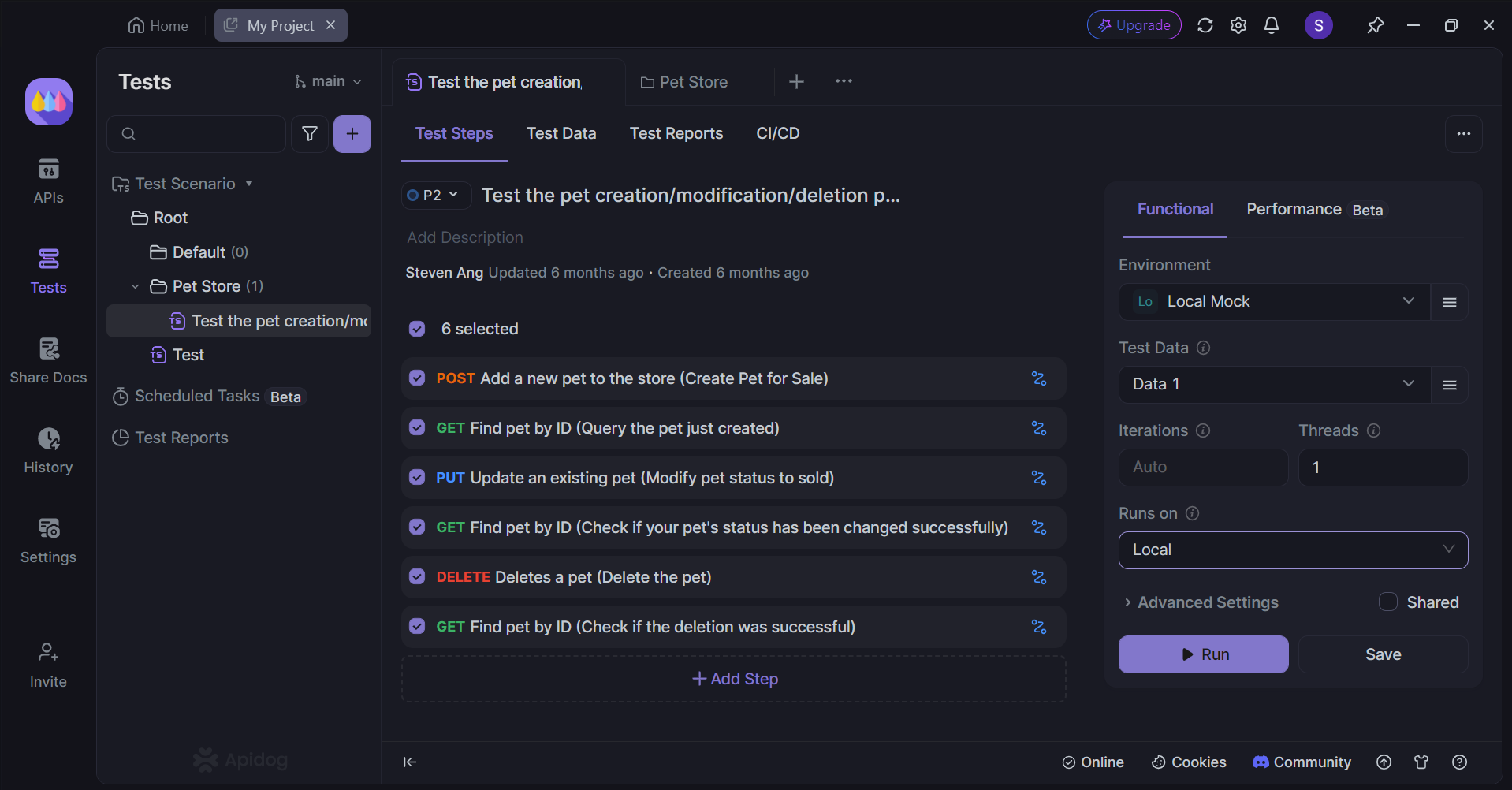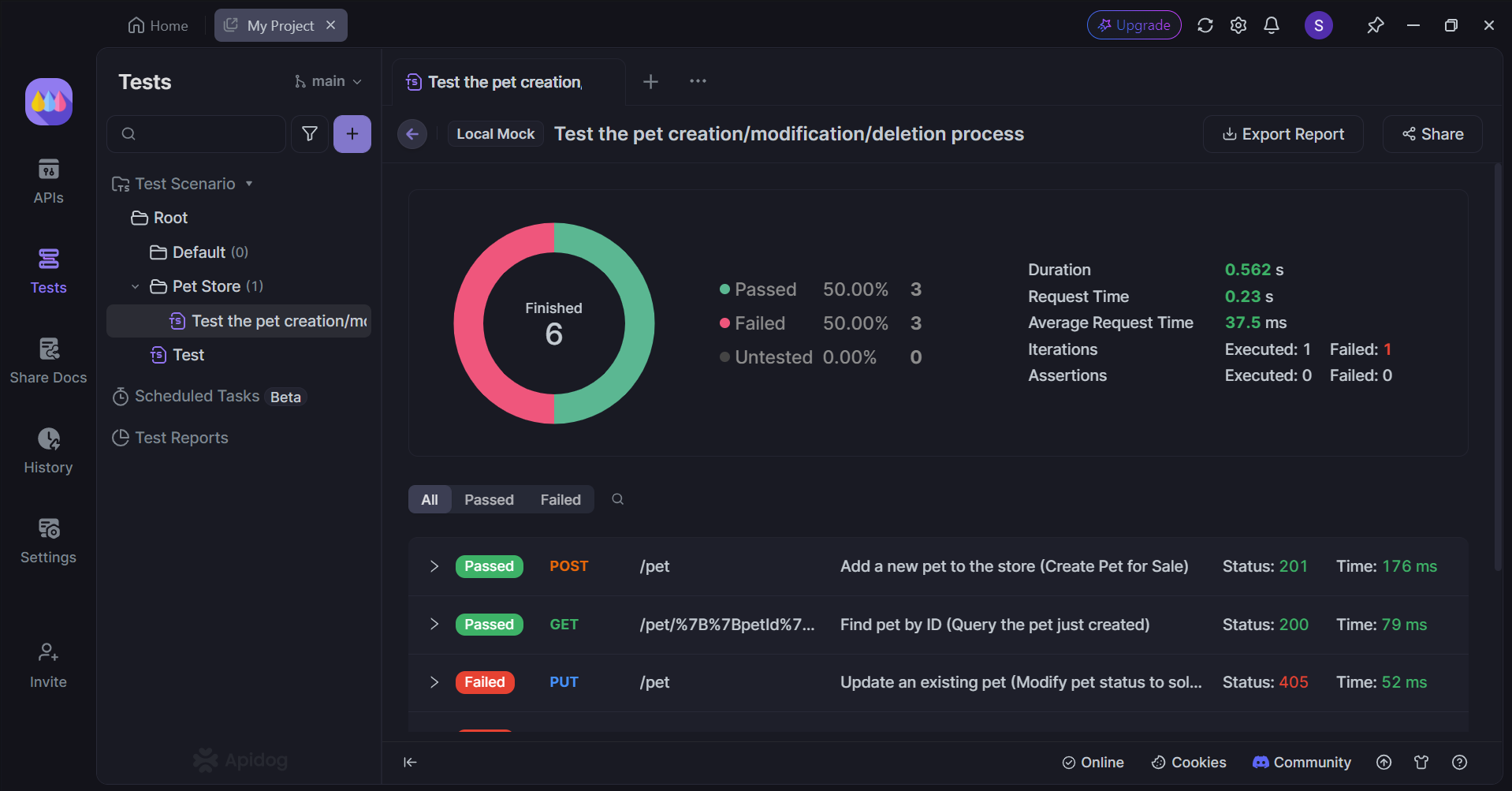The ever-evolving landscape of software development necessitates a constant focus on quality assurance. Endpoints, acting as the critical gateways for data flow within an application, demand a rigorous testing approach.
To learn what other capabilities Apidog possesses aside from testing, click the button below!

By implementing a comprehensive testing strategy, developers can identify and rectify potential issues before deployment, preventing costly bugs and ensuring a smooth user experience.
Core Testing Methodologies Developers Must Know
Ensuring endpoint functionality requires a multi-layered testing approach. Here, we delve into three core methodologies that form the foundation for robust endpoint testing:
Unit Testing: Isolating and Validating Individual Endpoints
Function
Unit testing focuses on the smallest testable unit – the individual endpoint itself. It isolates the endpoint's code from the rest of the application, allowing developers to test its specific functionalities in a controlled environment.
Benefits of Unit Testing
Early Bug Detection: Unit tests identify issues within the endpoint's logic early in the development process, leading to faster bug fixes.
Improved Code Maintainability: By testing individual units, developers ensure code changes don't unintentionally break other functionalities.
Tools
Popular unit testing frameworks for endpoints include Jest (JavaScript) and Mocha (JavaScript).
Integration Testing: Verifying Interactions between Endpoints and External Systems
Focus
Integration testing goes beyond individual endpoints, examining how they interact with external systems like databases or other APIs. It ensures smooth data flow and communication between various components.
Importance
Without proper integration testing, seemingly functional endpoints might fail when interacting with real-world systems due to unexpected data formats or communication errors.
Tools
Tools like Postman (API testing) and SoapUI (web service testing) facilitate sending simulated requests and verifying responses during integration testing.
Functional Testing: Ensuring Endpoints Deliver Expected Behavior
Objective
Functional testing takes a broader perspective, verifying if endpoints deliver the overall functionality outlined in the application's requirements. It ensures endpoints behave as intended and produces the desired results based on user input.
Process
Functional tests typically involve simulating user actions and interactions with the application to test endpoint responses. This might involve sending specific requests and analyzing the returned data or application behavior.
Tools
Automation frameworks like Selenium (web applications) and Cypress (web applications) are often used to create and execute functional tests for endpoints.
Advanced Testing Strategies Developers Can Consider
While core testing methodologies form the foundation, ensuring robust endpoint functionality often necessitates venturing into advanced testing strategies. Here, we explore two crucial areas for further exploration:
Security Testing: Safeguarding Endpoints from Malicious Attacks
In today's digital landscape, security is paramount. Endpoints, acting as gateways to your application, become prime targets for malicious actors. Security testing plays a vital role in identifying and mitigating vulnerabilities:
Focus
Security testing identifies weaknesses in endpoint security measures like authentication, authorization, and data validation. It simulates attacks (e.g., SQL injection, cross-site scripting) to assess the endpoint's ability to withstand them.
Benefits
Early detection and mitigation of security vulnerabilities prevent data breaches, unauthorized access, and potential application disruptions.
Tools
Popular security testing tools include OWASP ZAP (open-source web application scanner) and Burp Suite (commercial web vulnerability scanner). These tools scan endpoints for vulnerabilities and simulate attacks to identify weaknesses.
Performance Testing: Ensuring Endpoints Can Handle the Load
Endpoint performance directly impacts user experience. Performance testing measures how endpoints respond under varying loads:
Importance
Imagine an e-commerce application where a sudden surge in traffic overwhelms the endpoints, leading to slow response times or even crashes. Performance testing helps avoid such scenarios.
Process
Performance testing tools simulate high user volumes and analyze factors like response times, throughput (requests handled per second), and scalability (ability to handle increased load).
Tools
Tools like JMeter (open-source load testing tool) and LoadRunner (commercial load testing tool) help simulate user traffic and analyze endpoint performance under pressure.
Customizing Your Testing Strategy To What You Have
The effectiveness of your endpoint testing strategy hinges on selecting the most appropriate methods for your specific project. Here's how to navigate this decision-making process:
Considering Project Factors
Project Size and Complexity
For smaller projects with simpler endpoints, unit and integration testing might suffice. However, larger, more complex applications with numerous endpoints and interactions might require a more comprehensive strategy incorporating security and performance testing.
Development Methodology
Agile development methodologies often favor frequent, smaller-scale tests like unit testing. Waterfall methodologies might involve more upfront planning and comprehensive testing strategies.
Risk Assessment
Identify critical endpoints that handle sensitive data or have a significant impact on user experience. Prioritize thorough testing, including security and performance testing, for these high-risk endpoints.
The Test Pyramid: A Guiding Principle
The test pyramid is a visualization tool that helps developers prioritize testing strategies based on effort and impact. It's a pyramid shape where:
The Base: Unit Tests
Numerous, automated unit tests form the foundation, requiring minimal effort to write and maintain. They catch a large number of basic issues early in development.
The Middle: Integration Tests
Fewer, but more complex integration tests ensure communication and data flow between components. They require more effort to create but identify broader issues.
The Top: Security & Performance Tests
The fewest, yet most critical tests, focus on security and performance. They require significant effort but uncover high-impact vulnerabilities and performance bottlenecks.
Apidog - Test Your APIs Through and Thoroughly
For developers who are seeking an API testing tool for their projects, you can consider using Apidog.

Apidog is a comprehensive API development tool that also provides developers with the necessary tools for building, mocking, and documenting APIs.
Let us take a look at how Apidog displays its testing features!
Apidog Test Scenarios
Apidog has a unique testing feature called test scenarios.


With Apidog, you can visually test different APIs together in a series of consecutive steps. This is especially effective for developers who have created a chain of APIs that rely on each other to perform their functionalities.
Apidog Test Scenario Results

Apidog will then return a detailed report on your test scenario, outlining the number of failed and successful requests, together with the total duration of all the APIs to complete them.
Individual API Endpoint Testing With Apidog

Apidog supports developers who wish to test individual APIs and observe each response on its own. All you have to press the Run header, followed by the Send button, in that sequence.

Conclusion
Implementing a robust testing strategy is paramount for ensuring the seamless operation of your application's endpoints. By employing core methodologies like unit, integration, and functional testing, developers establish a solid foundation for endpoint functionality. Expanding this foundation with advanced strategies like security and performance testing further strengthens the overall resilience of your application.
Ultimately, a well-tailored testing approach, informed by project factors and guided by the test pyramid principle, empowers developers to build confidence in their endpoints' ability to deliver a flawless user experience. Remember, investing in thorough testing upfront saves time and resources in the long run, safeguarding your application from potential disruptions and security threats.




